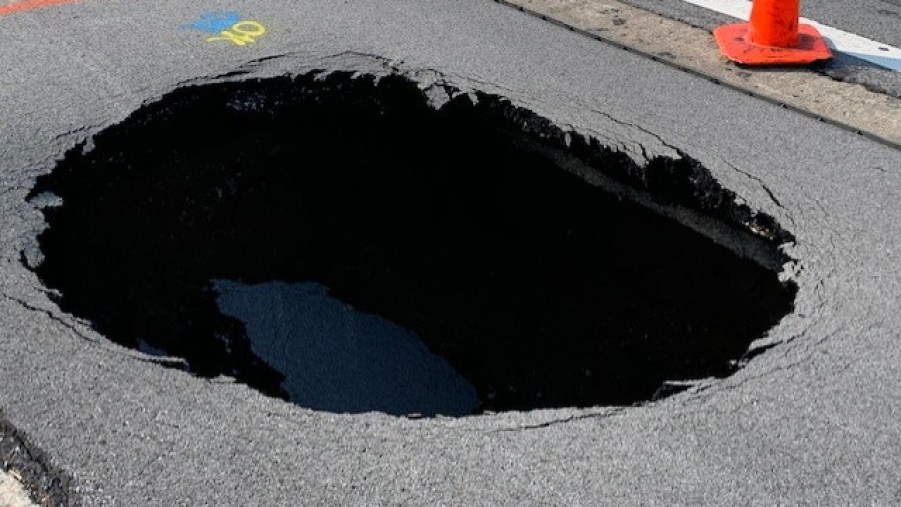
One Massive Sinkhole Stopped Indiana Traffic
Imagine calling your boss or significant other to explain that you’re about to be late due to a massive sinkhole in the road. It sounds crazy, but it could happen, and it recently did in Indiana, bringing traffic to a stop.
A sinkhole closed I-465

According to WRTV, the exit ramp from Allisonville Road to I-465 Eastbound will be closed while the city works to fix a massive hole. But if I say so myself, this road has an excellent name. Anyway, the hole is to the side of driving lanes on I-465.
The Indiana Department of Transportation shared that a pipe failed underneath the area of the hole. INDOT workers are shutting down the exit ramp at Allisonville Road for the foreseeable future.
Their team has been working late into the night to excavate and find out exactly how big of a problem this is. Heavy equipment is being used to determine how deep the hole is. No one has been hurt due to this problem, and they must not be worried about this issue spreading as lanes beside the exit ramp will remain open.
How do sinkholes form on roads?
This massive hole isn’t the first to open up on a major interstate. Recently, according to ABC11, a gigantic 8-foot sinkhole opened up on a five-lane road in Fayetteville, North Carolina. NCDOT crews installed a large concrete box to house two pipes that were exposed by the hole. The pipes remain undamaged. Workers also added backfill that includes dirt, rock, and recycled material and four inches of asphalt on top to repair the hole.
Water seepage from a drainage pipe likely caused the ground beneath the pavement to erode over time. Eventually, this created a sunken depression that buckled the pavement. The road has since reopened.
This is generally the cause of sinkholes that seemingly come out of nowhere, swallowing everything in their path and creating an apocalyptic look and emergency situation. Some swallow cars, houses, and people.
When rainwater or drainage seeps into the ground with nowhere to go, it can build up under the surface as it eats away at dirt and rock. The hole gets bigger and bigger until one day, the dirt above it sinks.
Sinkholes are more common in dissolvable terrains like gypsum, salt, and limestone, which are common in Florida and other parts of the world. Building massive sewer systems and mining can compromise the integrity of the ground.
How to spot a forming hole

The US geological survey tracks areas that could be susceptible to sinkholes, but people never truly know where and when one might open up. But there are a few ways to spot dangerous areas.
One sign that could mean a sinkhole is forming is the appearance of new cracks on the road’s surface. You should also look for any signs of crumbling or erosion on the shoulders. Roadways above drainage culverts and bridges may be more suitable for sinkholes due to constant flowing water and debris.
If your car falls in a sinkhole, do not try to reverse. This could worsen the hole and be dangerous for other drivers behind you. Get out of your car immediately. Keeping a glass-breaking tool and gloves in your vehicle can be helpful. If you see signs of a sinkhole, large cracks in the road, or shoulder erosion, you can call your highway department or local law enforcement to check it out.



